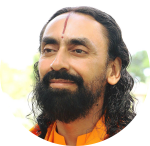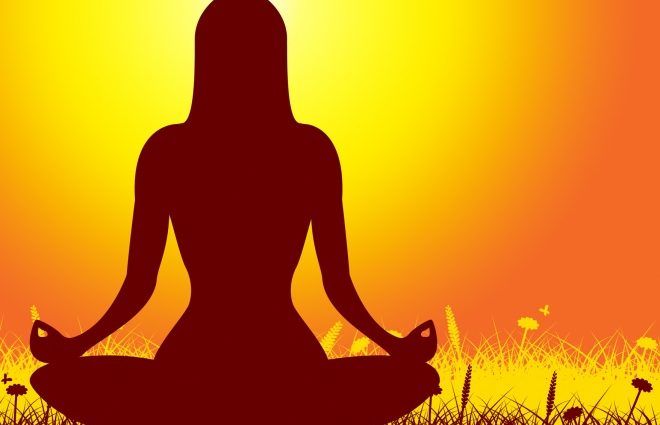H. H. Swami Mukundananda
The physical immune system safeguards our physical well-being; so does our psychological immune system that defends our mental well-being. Psychologists Daniel Gilbert and Timothy D. Wilson formulated the phrase ‘psychological immune system’ that encompasses all our cognitive mechanisms, which fortify us from experiencing despondent or low-spirited emotions. However, the science of Yog has not only identified these two systems, but has gone further.
Immunity is a system, not a single entity; it is our shield. Hence, the science of Yog provides a holistic approach to develop resilience physically, mentally, socially, emotionally, and spiritually. The science of Yog is extensive, but here are a few pointers that will help you navigate through these challenging times, and come out stronger.
1. Healthy Diet
The wise partake of foods that are conducive to good health and have a peaceable impact not only on the body, but also upon the mind. The Chāndogya Upanishad states: āhāra śhuddhau sattva śhuddhiḥ (7.26.2) “By eating pure food, the mind becomes pure.” Sātvic foods such as grains, pulses, fruit, and vegetables are the pure foods that bestow good health, virtue, and happiness. Shree Krishna proclaims in Bhagavad Gita that these foods are āyuḥ sattva (promote longevity.)
Variety is the key to a healthy diet. A balanced meal contains a protein source, a grain or starchy vegetable, fresh vegetables & fruit, and healthy fat. To boost immunity, consume citrus fruits which are rich in Vitamin C. Have one lemon a day in any form; if available, have an āmla or Indian gooseberry, which is rich in Vitamin C and equivalent to ten oranges. Antioxidants are critical in boosting and maintaining immunity. For protective antioxidants, rely on these commonly used food items: turmeric for curcuminoids, green tea for catechins, grape seeds for cyanidins, and reishi mushrooms for triterpenes.
2. Yogasanas for Balance and Resilience
Extensive research shows that yogasans regulate stress response systems, resulting in decreased physiological triggers. For example, regular practice of yogasans such as these reduce the heart rate, lowering blood pressure and easing respiration, and dispel anxiety:
Shashankasana (The Moon Pose): It’s a tension relieving asan that helps maintain a healthy body and sound mind by toning the spinal nerves, sciatic nerves, and the pelvic muscles. Besides, it superbly assists in the functioning of the adrenal glands.
Bhujangansan (Cobra Pose): It provides elasticity to the lungs by expanding the chest, which results in proper blood circulation in the pelvic region. It has versatile effects like, recovery from slipped-disc, rejuvenation of the spine, alleviation of stiff back problems, and giving natural relief in lumbago and sciatica. Additionally, it activates the appetite, eliminates constipation, and is tremendously useful for the abdominal organs such as live and kidneys too.
Dhanurasan (Bow Pose): Keeps the liver, kidneys, and abdominal organs and muscles healthy by massaging them well. It tones up the pancreas and adrenal glands to maintain the balance in their secretions, and improves the functionality of the digestive and reproductive organs. It assists in rooting out gastrointestinal disorders, dyspepsia, chronic constipation. And the poor functioning of the liver. A regular practice of this asan realigns the spinal column properly, and alleviates urinary disorders.
Supt Pawan Muktasan ((Leg Locked Air Releasing Pose): It is an invigorating pose as it strengthens your lower back muscles and makes the spinal vertebrate flexible. The main purpose of this pose is to remove gas and constipation, by massaging the abdomen and digestive organs.
3. Breathing the Right Way
Prāṇayam is derived from two words – ‘prāṇ’ (life-giving energy) and ‘āyām’ (to extend). This vital energy flows into our body through breath and moves around the body via nādis or channels. There are seventy-two thousand nādis in the body, and when the prāṇ flows effortlessly without any blockages through our nādis, we feel invigorated and experience an increased sense of well-being.
Most of us do not take deep breaths either because we are caught up in the buzz of life, or being unaware of the importance of deep breathing. During normal breathing, only about twenty million alveolar cells in the lungs receive oxygen; whereas the remaining fifty-three million alveolar cells are deprived of fresh oxygen. As a result, less originated lung tissues become susceptible to infectious diseases such as SARS, COVID-19, etc.
Further, studies indicate that practicing Bhastrika, Anulom Vilom, Bhramari, Kapalbhathi, and Bhya types of prāṇayam increases the activity of antioxidant enzymes, which prevent cellular damage due to free radicals in coronary artery disease.
4. Empower Your Mind Through Meditation
Meditation has infinite potential with three-fold benefits: spiritual, mental, and physical. A life without meditation is like a horse without reins; an automobile without a steering wheel, or a ship without a compass. Emotions consume us and can leave us completely drained and exhausted. A degree of emotional maturity is necessary to develop an adequate reserve of mental energy for creative solutions to the problems of life. The practice of meditation brings stability in emotions.
Most ailments have their roots in the mind. When one harbors hatred, envy, anxiety, tension, fear, etc., it disturbs the mental sheath (one of the five sheaths in the body.) This disturbance is then passed on to the prānic sheath, which then manifests in the physical sheath of the body as disease. Meditation on God heals the various ailments of the mind, resulting in the enhancement of vital energy and the improvement of physical health.
5. Insulate Yourself with Knowledge
The purest object in this world is divine knowledge declares Shree Krishna in Bhagavad Gita. True knowledge transforms our lives when implemented appropriately. There are two methods of acquiring knowledge – ascending and descending process. While in the ascending process we explore, discover, and conclude about the nature of the truth, in the descending process we receive the knowledge from a perfect source. Our Vedas, which are God’s gracious divine endowment, are one such source of inspiration that elevate us. Therefore, read holy books, as this wisdom is supreme and helps us find the meaning and purpose of life.
 H. H. Swami Mukundananda, a yogi, world-renowned spiritual teacher, an authority on mind management, IIT & IIM alumnus, bhakti saint, is the founder of JKYog. Swamiji, who has studied the Eastern and Western scriptures under the guidance of Shree Kripaluji Maharaj, dives deep into the Vedic psychology, to leverage the immense power of the mind that results in the ultimate transformation. He is the author of several books, including 7 Mindsets for Success, Happiness, and Fulfilment | Art of Mind Management | Bhagavad Gita, The Song of God | Yoga for the Body, Mind & Soul | Spiritual Dialectics
H. H. Swami Mukundananda, a yogi, world-renowned spiritual teacher, an authority on mind management, IIT & IIM alumnus, bhakti saint, is the founder of JKYog. Swamiji, who has studied the Eastern and Western scriptures under the guidance of Shree Kripaluji Maharaj, dives deep into the Vedic psychology, to leverage the immense power of the mind that results in the ultimate transformation. He is the author of several books, including 7 Mindsets for Success, Happiness, and Fulfilment | Art of Mind Management | Bhagavad Gita, The Song of God | Yoga for the Body, Mind & Soul | Spiritual Dialectics

